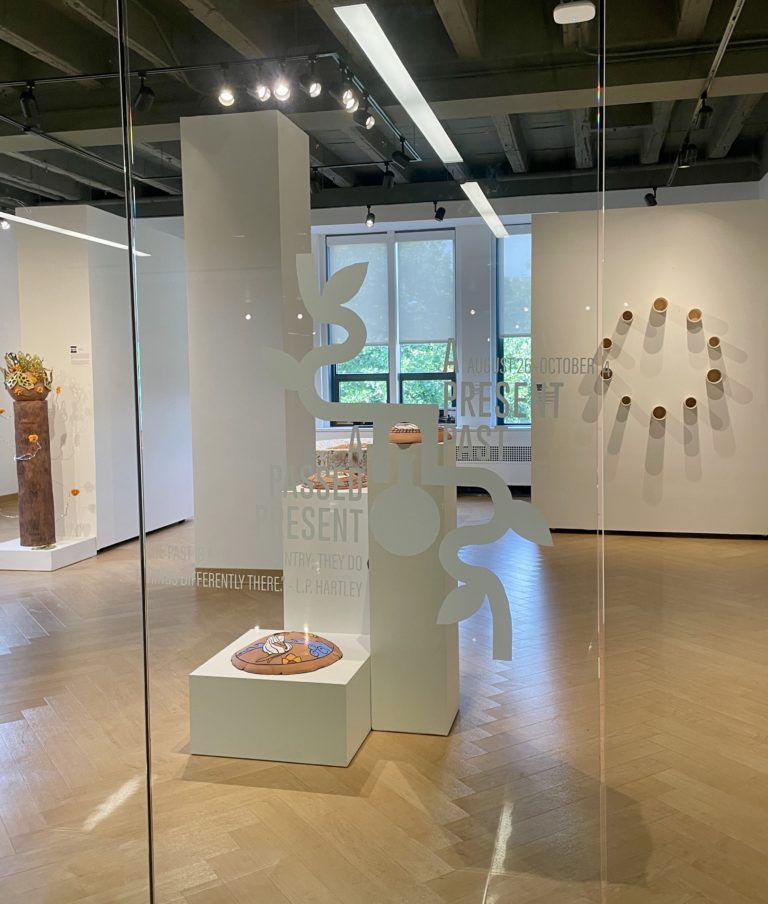
Two College of Arts & Letters students were winners at MSU’s 3rd Annual Social Justice Art Festival. Congratulations to Maddy Eischer, a sophomore who is double majoring in Apparel and Textile design and Genomics/Molecular Genetics, and Lillian Young, a first-year M.F.A. in Studio Art student. They were two of the four students to receive awards at this one-day festival that focuses on social justice topics through artistic expression.
Eischer won the Most Out of the Box Award for her mixed media studio art piece, titled Clothes Can’t Consent,and Young won the Most Inspiring Visual Art Award for her entry, titled Brown Baby.
The festival took place January 24at MSU’s Snyder and Philips Hall. Event sponsors included the Associate Provost for Undergrad Education, College of Natural Sciences, James Madison College, the Honors College, MSU Graduate School, Office for Inclusion and Intercultural Initiatives, Residential College in the Arts and Humanities, Residential and Hospitality Services, and the Michigan State University Federal Credit Union.
Maddy Eischer’s Clothes Can’t Consent

Eischer’s Clothes Can’t Consent represents the fact that sexual assault is about the perpetrator wanting power over the victim, and never about what the survivor was wearing or what they were or weren’t doing.
“I designed each piece in a way that without the context behind it, the audience would just think they are looking at cute fashion illustrations,” Eischer said. “This is similar to how survivors of sexual assault may appear ‘normal’ from the outside, when in reality they are a frenzy of emotions on the inside.”
Eischer was inspired to create Clothes Can’t Consent by the original What Were You Wearing survivor art instillation at the University of Arkansas.

“Clothes Can’t Consent is a step in the right direction towards having a real conversation about sexual assault and seeks to further shift the blame of sexual assault off of survivors,” Eischer said. “Survivors are still constantly blamed for what happens to them, and this piece is a way to further highlight the absurdity in that.”
Eischer also drew inspiration from her piece from the work she does as a Peer Educator for the Sexual Assault and Relationship Violence program in MSU’s Department of Prevention, Outreach, and Education.
“Bringing awareness to the issue of sexual assault, especially on a college campus, is something that I am very passionate about,” Eischer said. “That drive to educate others inspired me to make this piece.”
Lillian Young’s Brown Baby

Young’s Brown Baby is a piece she continues to work on that consists of 17 4X6 linen-wrapped panels, each featuring a portrait of a child or teenager, ages 7 to 19, who had been murdered because of racist mentality or police brutality. Each panel is painted a different color and the eyes of each individual is crossed out with black spray paint to visibly represent that they are gone.
“They are not remembered as children but as figures of a movement, so their humanity seems lost. That is why they are painted a different color. I wanted to give their humanity back,” Young said. “Each canvas also has their name at the top and age at the bottom to humanize them.”
The first panel is of George Stinney Jr., an African American boy who was convicted of murdering two white girls and executed by electric chair at the age of 14. His conviction was overturned 70 years after he was put to death.

The panels are displayed with spaces staggered in between to represent the children that Young hasn’t either found yet, hasn’t made panels for yet, or the ones she may never find because they might not be documented.
Young’s piece, which she started almost two years ago during her final semester of her undergraduate program, was inspired by her own personal experiences teaching art to young children and by a play she saw with her grandma about Nina Simone.
“In the play, they were talking about the girls from the Birmingham bombing, and every time they referred to them as ‘the four girls.’ Nina got really mad and said ‘they have names,’ and I sat there saying to myself, ‘yeah, they do have names!’” This inspired Young to want to represent those people, those children, who had names but were never referred by their names once they had died. The title of Young’s project also was inspired by the Nina Simone song, Black Baby.
Brown Baby also will appear at the Lansing Art Gallery in the Collegiate Art Exhibition, which runs March 3-28.


